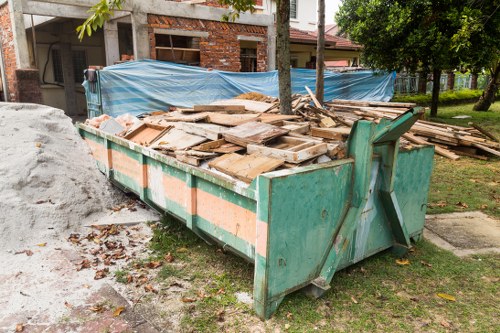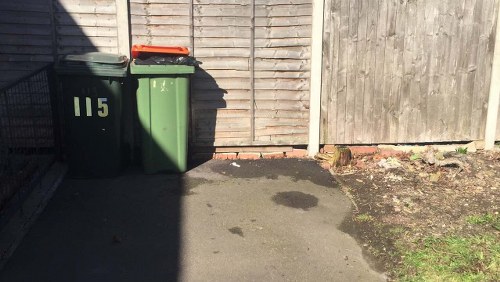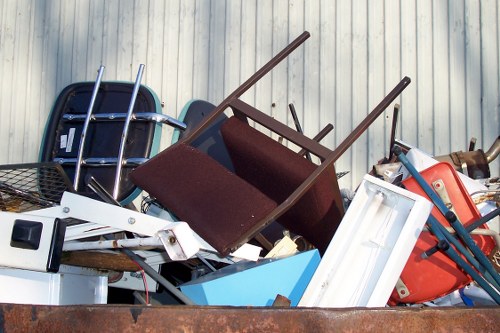Comprehensive Guide to Demolition Waste Removal in Muswell Hill

Introduction to Demolition Waste Removal
Demolition projects, whether residential or commercial, generate a significant amount of waste. Proper demolition waste removal in Muswell Hill is essential to maintain environmental standards and ensure the safety of the community. Efficient waste management not only complies with local regulations but also promotes sustainability.
Understanding the types of waste produced during demolition can help in planning the removal process effectively. Common demolition waste includes concrete, wood, metals, and hazardous materials. Each type requires specific handling and disposal methods to minimize environmental impact.
Choosing the right waste removal service in Muswell Hill is crucial for the success of your demolition project. Professional services offer tailored solutions that cater to the unique needs of each project, ensuring that waste is removed responsibly and efficiently.

Types of Demolition Waste
1. Concrete and Masonry
Concrete is a staple in many construction projects. During demolition, breaking down concrete structures generates a substantial amount of waste. Proper disposal is necessary to prevent environmental degradation. Recyclable concrete can be repurposed for new construction projects, promoting sustainability.
Masonry materials, including bricks and blocks, also contribute to demolition waste. Sorting and recycling these materials can reduce the overall waste footprint and lower the costs associated with disposal.
2. Wood and Lumber
Wooden structures, such as beams and flooring, are common in buildings slated for demolition. While some wood can be recycled or repurposed, treated lumber containing chemicals must be handled with care to avoid environmental contamination.
Implementing a recycling plan for wood waste can significantly decrease the volume of material sent to landfills, aligning with green building practices.

Metals and Hazardous Materials
1. Metals
Metals like steel and aluminum are highly recyclable and can be sold as scrap, providing a revenue stream to offset demolition costs. Proper segregation of metals ensures maximum recovery and minimizes waste.
Engaging with recycling facilities that specialize in metal processing is a strategic move for effective waste management.
2. Hazardous Materials
Demolition projects often uncover hazardous materials such as asbestos, lead, and chemicals. Specialized handling and disposal are mandatory to comply with safety regulations and protect public health.
Hiring professionals for hazardous waste removal ensures that these materials are managed safely and legally.

Steps for Efficient Waste Removal
1. Assessment and Planning
Begin by conducting a thorough assessment of the demolition site to identify the types and volumes of waste generated. This information is critical for developing a comprehensive waste management plan.
Planning should include timelines, resource allocation, and selecting appropriate disposal methods to ensure seamless waste removal.
2. Segregation and Sorting
Proper segregation of different waste materials at the source simplifies the recycling and disposal process. Sorting helps in maximizing material recovery and reducing landfill burden.
Implementing color-coded bins and clear labeling can enhance the efficiency of the sorting process.

Choosing the Right Waste Removal Service
1. Experience and Expertise
Select a waste removal company with extensive experience in handling demolition projects. Expertise in managing various types of waste ensures that your project adheres to all regulatory standards and environmental guidelines.
Experienced professionals can offer valuable insights and customized solutions tailored to your specific needs.
2. Compliance and Certification
Ensure that the waste removal service is compliant with local laws and holds the necessary certifications for handling and disposing of hazardous materials. Compliance guarantees that waste is managed responsibly and legally.
Requesting proof of certifications and licenses is a good practice before finalizing a service provider.
Environmental Impact of Proper Waste Removal
1. Reducing Landfill Usage
Effective waste removal strategies decrease the volume of materials sent to landfills, conserving space and reducing environmental strain.
Recycling and reusing materials contribute to a circular economy, promoting sustainability.
2. Minimizing Pollution
Proper disposal of hazardous materials prevents soil and water contamination, safeguarding ecosystems and public health.
Adhering to environmental best practices ensures that demolition waste removal contributes positively to the community.

Cost-Effective Strategies
1. Recycling and Reuse
Recycling materials like metals and concrete can significantly reduce disposal costs. Reselling reusable materials adds an additional revenue stream, making demolition projects more financially viable.
Implementing a robust recycling plan can lead to long-term savings and environmental benefits.
2. Efficient Logistics
Optimizing transportation logistics for waste removal minimizes fuel consumption and reduces overall costs. Coordinating with local recycling centers and disposal facilities enhances efficiency.
Strategic planning of waste transport routes ensures timely and cost-effective removal.

Regulatory Considerations
1. Local Regulations
Demolition waste removal in Muswell Hill must comply with local regulations governing waste management. Understanding these laws prevents legal complications and ensures smooth project execution.
Staying updated with regulatory changes is essential for maintaining compliance.
2. Permits and Documentation
Obtaining the necessary permits for waste removal is a critical step in the demolition process. Proper documentation ensures accountability and transparency in waste management practices.
Maintaining records of waste disposal can be beneficial for future audits and reference.

Benefits of Professional Waste Removal Services
1. Time Efficiency
Professional services streamline the waste removal process, saving valuable time and allowing you to focus on other aspects of the demolition project.
Experienced teams can handle unexpected challenges promptly, ensuring project timelines are met.
2. Safety Assurance
Handling demolition waste involves risks, especially when dealing with hazardous materials. Professionals are trained to manage these risks effectively, ensuring the safety of all parties involved.
Adhering to safety protocols minimizes accidents and protects the workforce and the community.

Recycling Initiatives in Muswell Hill
1. Local Recycling Centers
Muswell Hill boasts several recycling centers equipped to handle various types of demolition waste. Partnering with these centers ensures responsible waste management and supports the local economy.
Engaging with community-driven recycling initiatives fosters a culture of sustainability.
2. Community Involvement
Encouraging community participation in recycling efforts enhances the effectiveness of waste removal strategies. Educational programs and awareness campaigns can promote better waste management practices.
Community involvement leads to broader acceptance and support for sustainable initiatives.

Future Trends in Waste Removal
1. Technological Advancements
Advancements in waste management technology are revolutionizing demolition waste removal. Innovations like AI-driven sorting systems and eco-friendly disposal methods are enhancing efficiency and reducing environmental impact.
Staying abreast of technological trends ensures that waste removal practices remain cutting-edge and sustainable.
2. Sustainable Practices
The push towards sustainability is shaping the future of demolition waste removal. Emphasis on reducing carbon footprints, maximizing recycling, and minimizing waste production aligns with global environmental goals.
Adopting sustainable practices not only benefits the environment but also improves the reputation and viability of waste removal services.

Conclusion
Effective demolition waste removal in Muswell Hill is a multifaceted process that requires careful planning, adherence to regulations, and the expertise of professional services. By understanding the types of waste, implementing efficient removal strategies, and embracing sustainability, demolition projects can minimize their environmental impact and contribute positively to the community.
Investing in proper waste management not only ensures compliance but also promotes a healthier and more sustainable environment for future generations.
Contact us today to learn more about our demolition waste removal services and how we can assist you in managing your next project efficiently and responsibly.